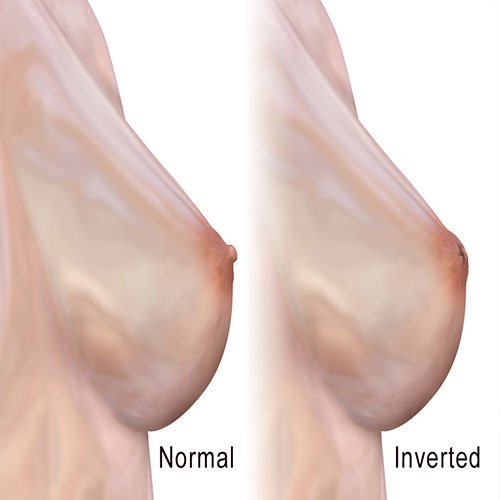
Nipple Inversion
Nipple Inversion
Nipple inversion, also known as inverted nipples, is a condition where one or both nipples retract into the breast instead of protruding outward. This can occur in various degrees, ranging from slightly inverted to completely retracted. Nipple inversion can be present at birth (congenital) or can develop later in life due to various factors.
Diagnosis typically involves a physical examination by a healthcare provider, who will assess the degree of inversion and inquire about any related symptoms or medical history. In some cases, imaging tests like a mammogram or ultrasound may be conducted to rule out underlying issues.
While nipple inversion is often harmless and does not require treatment, it can affect a person’s self-esteem or ability to breastfeed. Individuals experiencing nipple inversion should consult a healthcare provider for personalized advice and treatment options.

Causes of Nipple Inversion
- Congenital Factors: Some individuals are born with inverted nipples due to the way breast tissue develops.
- Hormonal Changes: Fluctuations in hormone levels during puberty, menstruation, or pregnancy can lead to temporary inversion.
- Breastfeeding: Some women may experience inverted nipples after breastfeeding, as the pulling during nursing can affect nipple shape.
- Infections or Inflammation: Conditions like mastitis or abscesses can cause swelling and retraction of the nipple.
- Scar Tissue: Surgery or trauma to the breast can lead to scar tissue formation, which may pull the nipple inward.
- Medical Conditions: Certain medical conditions, such as tumors or Paget’s disease of the breast, can also result in nipple inversion.
Symptoms
- Nipples that are flat or retracted
- Discomfort or sensitivity in the nipple area
- Possible discharge from the nipple
